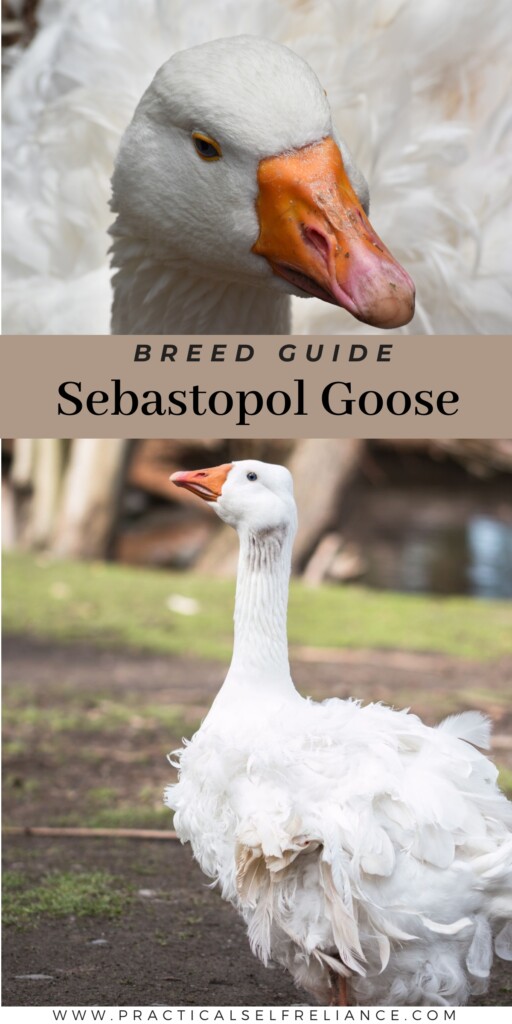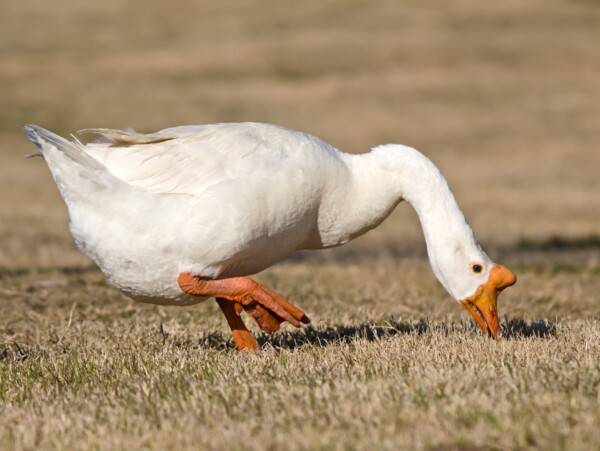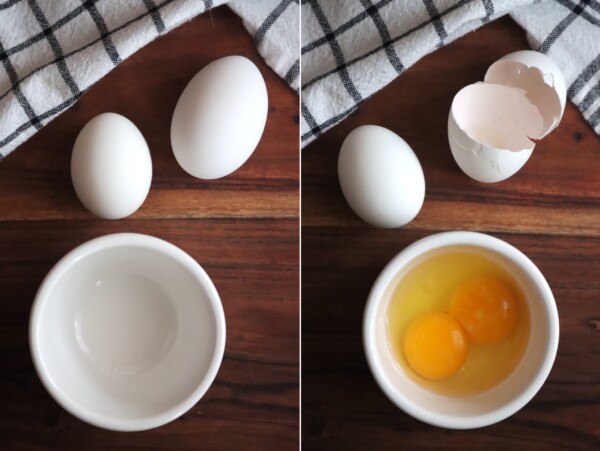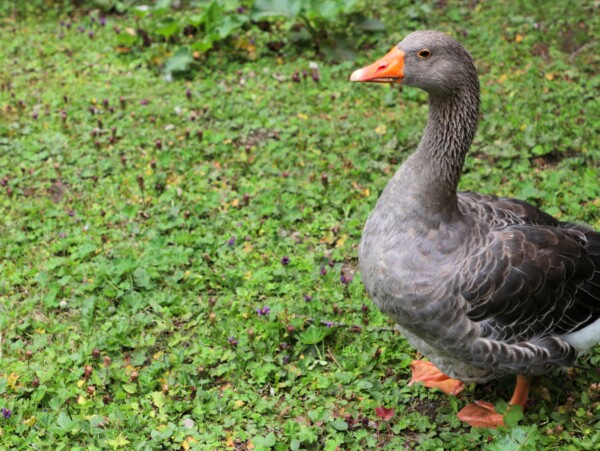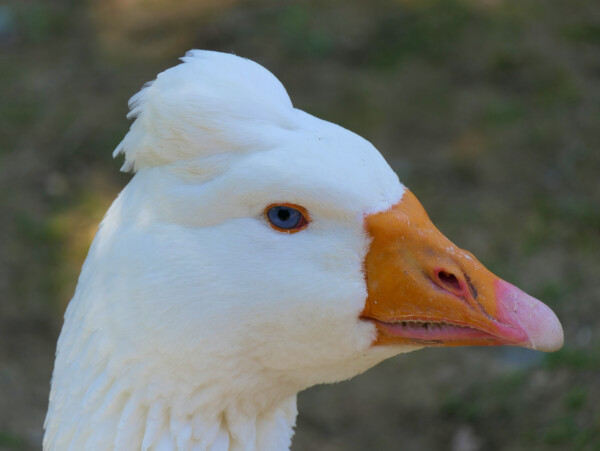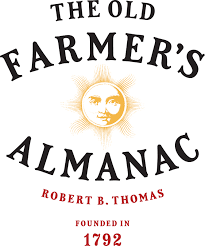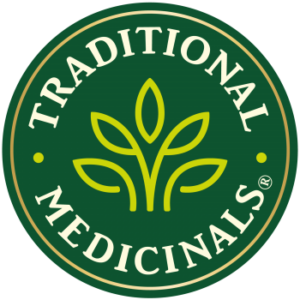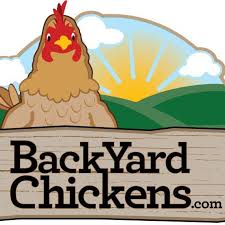Affiliate disclosure: This post may contain affiliate links. Please see our Privacy Policy.
Sebastopol geese are perhaps the most elegant and unusual-looking geese you can keep, with long, curling feathers that drape like lace over their rounded bodies. Their ornamental appearance makes them a favorite at poultry shows and backyard flocks alike, but they’re far more than just a pretty face.
Behind the frills, Sebastopols are calm, personable birds that thrive in well-managed flocks and bring charm to any homestead.
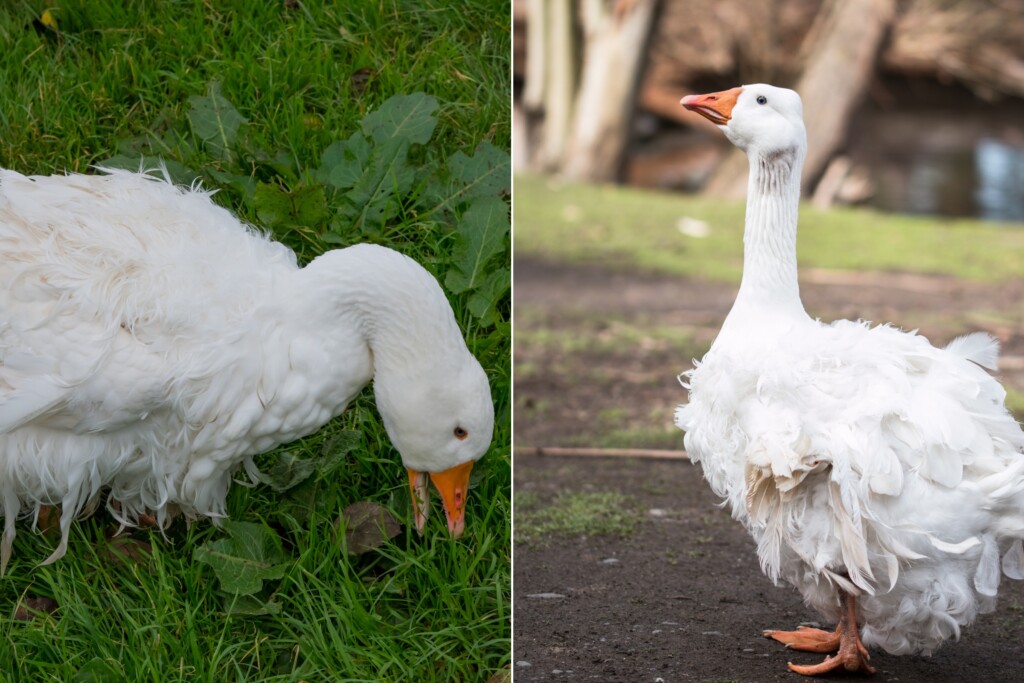
My daughter is all about fluffy animals, and though she loves her pet embden geese, she’s always wanted a lacy looking Sebastopol goose. Before we go down that road, I figured it’s a good idea to learn everything possible about this unique breed. We have always raised geese, but these little fluff buckets seem like a whole different ball game.
I learned that though they may look delicate, Sebastopols are surprisingly hardy and capable, so long as they have dry shelter and a bit of extra care for their unique feathers. They waddle more than they walk, and while they’re not the most athletic foragers, their docile nature and captivating looks more than make up for it.
What Are Sebastopol Geese?
Sebastopol geese are a domestic ornamental breed developed in Eastern Europe near the Black Sea—likely in what is now Ukraine. The breed gets its name from the port city of Sevastopol, from where it was exported to Western Europe in the 1800s. Though their exact lineage is unclear, they’re thought to descend from European Graylag geese, selectively bred for their unique feather mutation.
The breed’s defining characteristic is its curly or “frizzled” feathers. On the breast and neck, feathers are more structured, but along the body, the feathers are long, loose, and ribbon-like, creating a fluffy, almost mop-like appearance. This gives Sebastopols a graceful, flowing silhouette that sets them apart from every other goose breed.
Despite their looks, Sebastopols are practical, hardy, and make great additions to backyard flocks—especially if you’re looking for ornamental birds that are also friendly and relatively low maintenance.
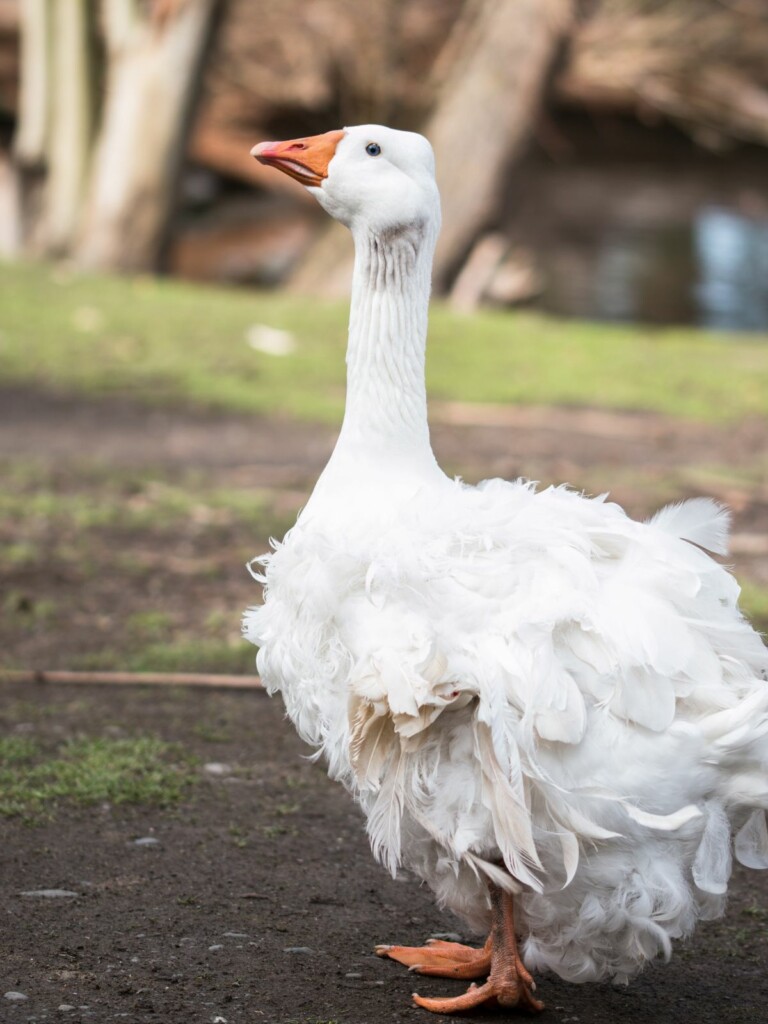
Pros and Cons of Sebastopol Geese
Like every animal, these geese have their pros and cons:
Pros:
- Exceptionally beautiful and unique appearance
- Calm, gentle, and easy to handle
- Good broodiness and parenting instincts
- Quiet and manageable for backyard settings
- Hardy in cold weather with proper care
Cons:
- Feathers are not waterproof—require shelter in wet weather
- Lower egg production than utility breeds
- Not ideal for pasture-only systems
- Can be more expensive and harder to find
Sebastopol Goose Characteristics
Sebastopol geese are medium-weight birds, with ganders averaging 12 to 14 pounds and geese around 10 to 12 pounds. They carry their bodies close to the ground and move with a slow, waddling gait. Their plumage gives them the illusion of being larger than they are.
They come in a few color varieties—white is the most common, but gray, buff, and saddleback patterns also exist. Their eyes are blue, and bills and legs are orange. The long curly feathers are more than just pretty; they also affect their behavior and care. These feathers are not waterproof and can hinder flight and vigorous movement, which makes them easier to contain—but also more vulnerable in wet weather.
Because of this, Sebastopols require dry shelter and protection from prolonged rain or snow. They’re best suited for well-managed farmyards or homesteads with good drainage and access to bathing water.
- Breed Name: Sebastopol Goose
- Breed Type: Ornamental, light dual-purpose
- Temperament: Gentle, calm, easy to manage
- Size: Medium. Ganders ~12–14 lbs, Geese ~10–12 lbs
- Eggs Per Year: 20 to 30 eggs (seasonal)
- Egg Size: Large
- Egg Color: White
- Lifespan: 12 to 18 years
- Time to Maturity: 24–28 weeks
Sebastopol Goose Breed Standard
Sebastopol geese have a rounded, compact body, a short neck, and a distinctive fluffy appearance due to their long, loose body feathers. These feathers can be curled, frizzled, or wavy, and the fluffiest birds are typically the result of careful breeding over generations.
Feathering on the neck is usually straighter, giving contrast to the rest of the body, while the breast and tail are billowy and soft. Their movements are graceful, almost swan-like, and they carry themselves with a dignified, serene posture.
Because of their feather structure, they don’t fly well—or at all—and they require special care to keep their plumage clean and healthy.
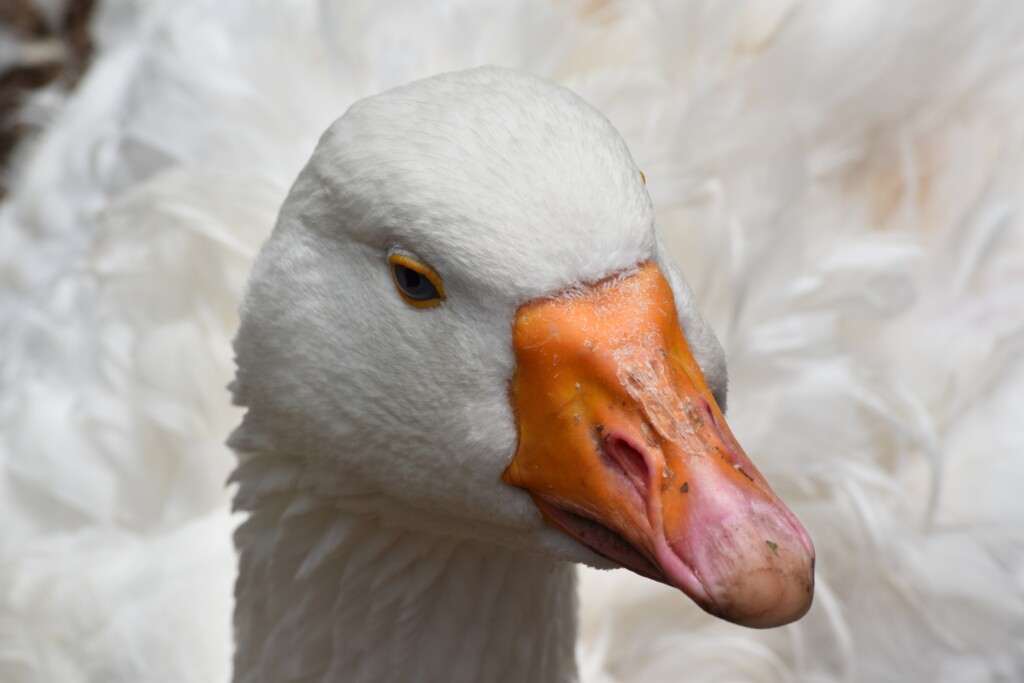
Temperament
Sebastopols are among the gentlest of all goose breeds. They rarely show aggression, even during breeding season, and tend to bond easily with people when raised with regular handling. If you’re looking for a goose that won’t charge visitors or startle the kids, this is one of the best choices available.
They’re curious and social, often waddling over to greet you or inspect what you’re doing in the yard. Sebastopols also do well in mixed flocks and tend not to bully smaller or younger birds.
Their voices are soft, and while they do honk, it’s far less frequent or intense than more vocal breeds like Chinese or African geese.
Hardiness
Despite their delicate looks, Sebastopols are quite hardy in cold weather, especially if kept dry and out of the wind. Their thick down and body fat give them insulation, but their long feathers lack waterproofing, which means they’re at risk of chilling in wet or muddy conditions.
They should always have access to clean, dry bedding and shelter—especially during extended rain or snow. Their feet are relatively small for their size, so good traction and clean ground are important to avoid injury or infection.
Heat tolerance is average, but shade and access to water for bathing are still essential in summer.
Egg Production
Sebastopol hens lay between 20 and 30 large eggs per year, usually beginning in early spring. They’re not prolific layers, but the eggs they do produce are excellent for hatching and baking alike.
Many hens go broody and make devoted mothers. They tend to be more reliable for natural hatching than some heavier breeds and often raise goslings with little intervention if given a calm, quiet environment.
If you’re interested in increasing flock numbers without incubators, Sebastopols can handle it—though egg production may decline with age.
Egg Color
Eggs are white with thick shells and a large yolk. Expect eggs to weigh between 5 and 6 ounces, especially during peak laying season.
Nests should be lined with dry bedding or straw, and placing them in low, quiet corners of the shelter will encourage hens to use them reliably.
Meat
While Sebastopols aren’t a meat-focused breed, they still produce a usable carcass at butchering age. Their meat is flavorful and tender, though less fatty than Embden or Toulouse geese.
If you’re raising them as dual-purpose birds, plan to butcher between 5 and 7 months for the best flavor and texture. However, most people keep Sebastopols for their ornamental and companion qualities rather than for meat.
Broodiness
Sebastopol geese have a strong maternal instinct. Many hens go broody in spring and will faithfully sit on a clutch of eggs.
They’re careful, attentive mothers and usually raise goslings without much help, though extra protection from wet weather and predators is essential.
You can also use Sebastopols to hatch and raise eggs from less reliable breeds.
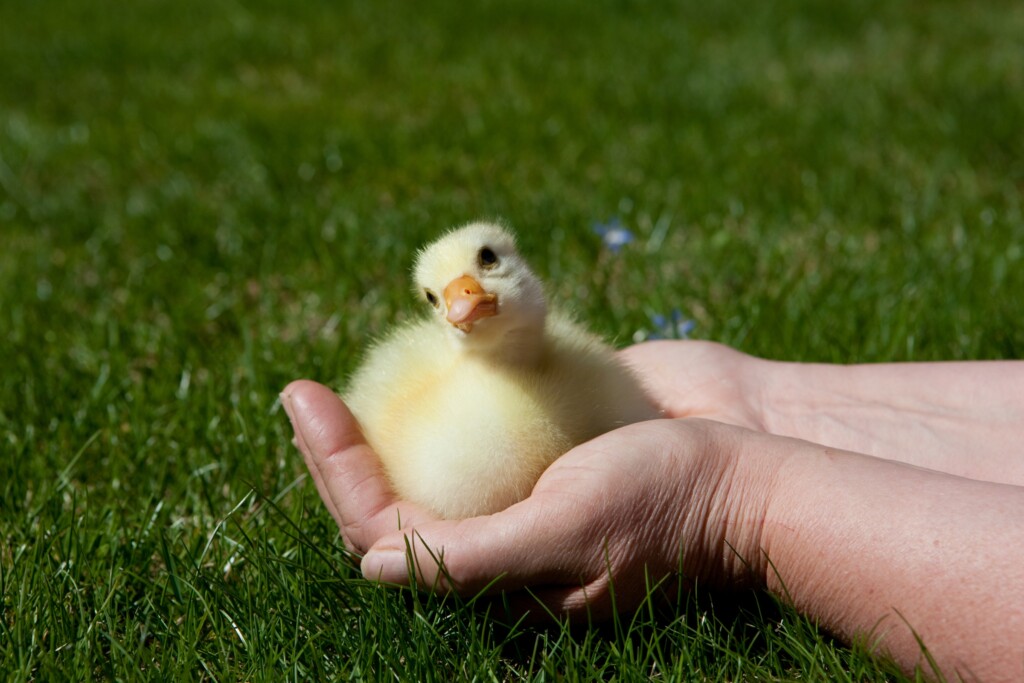
Foraging Ability
Sebastopols will graze and forage when given access to pasture, but their movement is slower and more awkward than upright breeds due to their feathering and lower carriage.
They still enjoy picking through grasses and broadleaf weeds, especially in the cool morning hours, but they benefit from supplemental feed more than some lighter or more active breeds.
Keep water sources clean and accessible, as they use bathing water to maintain feather condition, even if they don’t swim much.
Cross Breeds
Sebastopols are occasionally crossed with Buffs or Pilgrims to add visual appeal to utility breeds or soften temperament in larger meat strains. These crosses often retain a partially frizzled feather appearance, though the curl may lessen in second-generation birds.
Crossbreeding can also improve egg production slightly while retaining a portion of the ornamental charm.
However, preserving pure Sebastopols is recommended due to their rarity and genetic value.
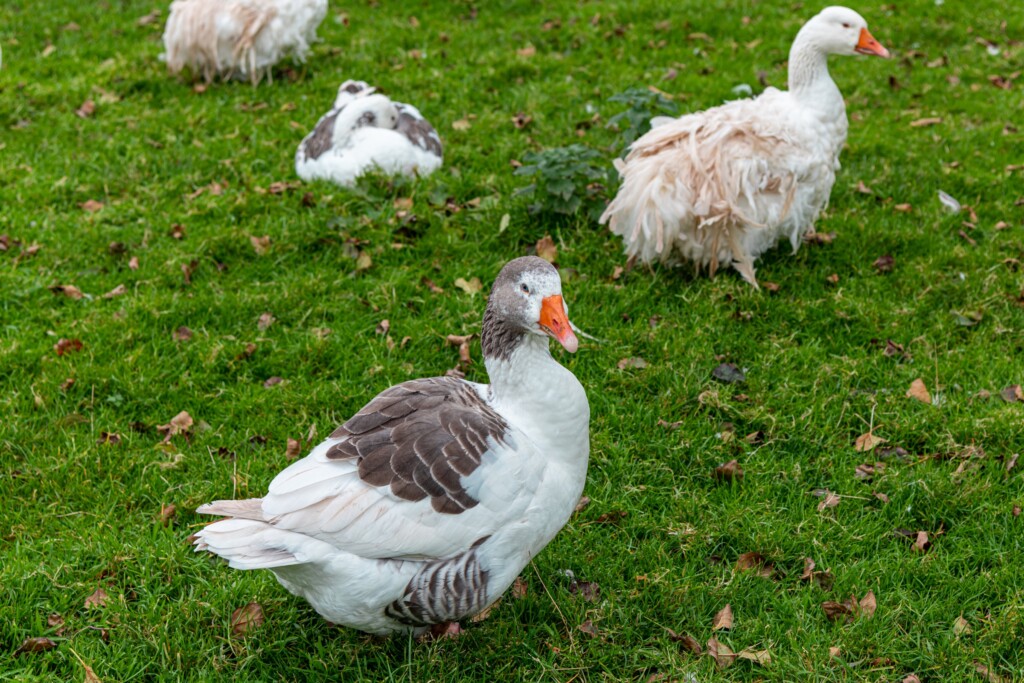
Common Health Issues
Sebastopols are healthy geese overall, but their feathering makes them vulnerable to a few challenges:
- Wet feathering: Provide dry shelter and avoid muddy pens
- Parasites: Long feathers can hide lice and mites—check regularly
- Foot and leg issues: Use soft bedding and avoid slippery surfaces
Clean living conditions, access to water, and a dry place to roost go a long way in keeping them healthy.
Tips for Raising Sebastopol Geese
Provide dry, clean bedding and rotate outdoor areas to avoid mud buildup. Use low-walled shelters so their feathers don’t snag on doorways or corners, and give them clean water for bathing—but avoid deep or dirty ponds where they could get chilled.
Start goslings on textured flooring with absorbent bedding, and handle them regularly for friendly, confident adults. Watch for feather buildup or matting and trim mud-caked feathers gently if needed.
In colder months, ensure that the shelter is protected from wind and moisture to prevent frostbite or damp down.
Sebastopol Goose FAQ
Yes—extremely gentle and calm, even during breeding season.
Ganders typically reach 12–14 lbs, geese 10–12 lbs.
Yes—expect 20 to 30 large white eggs per year in spring.
Yes—many hens go broody and are attentive, capable mothers.
They’re not a top meat breed, but they do produce a tender, flavorful carcass.
Yes—with dry shelter. Their feathers are not waterproof, so wet conditions are a concern.
No—but they need dry conditions and extra feather care. They’re best for hands-on keepers.
Do you keep Sebastopol Geese? What’s your experience with the breed? Leave me a note below in the comments, I’d love to hear how they’re going for you!
